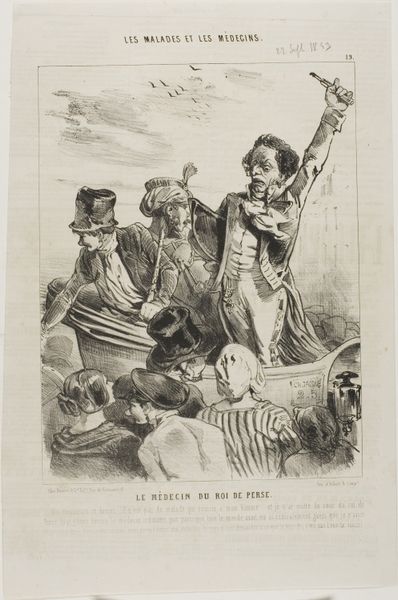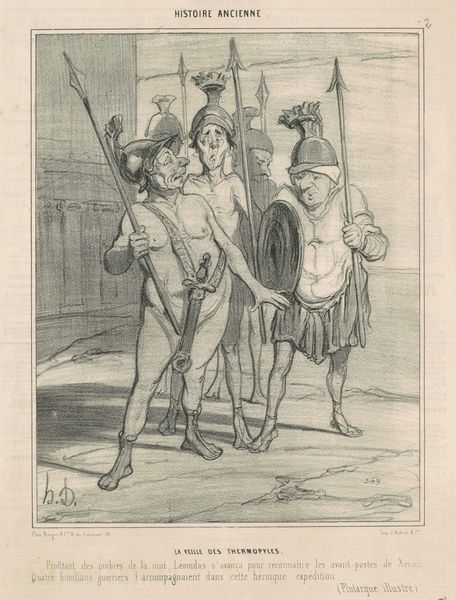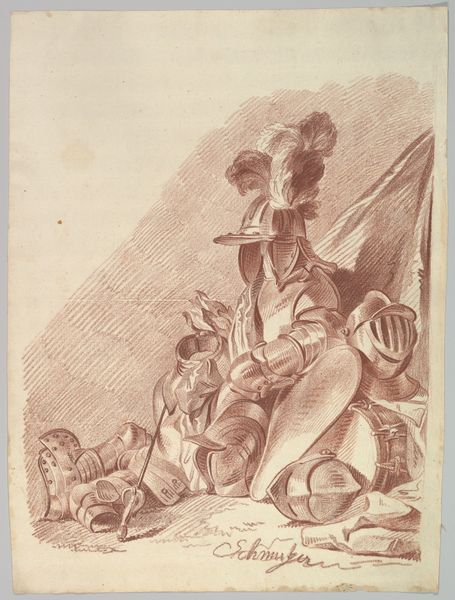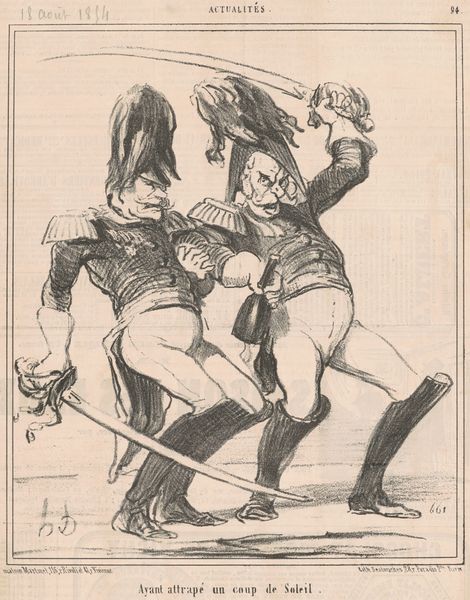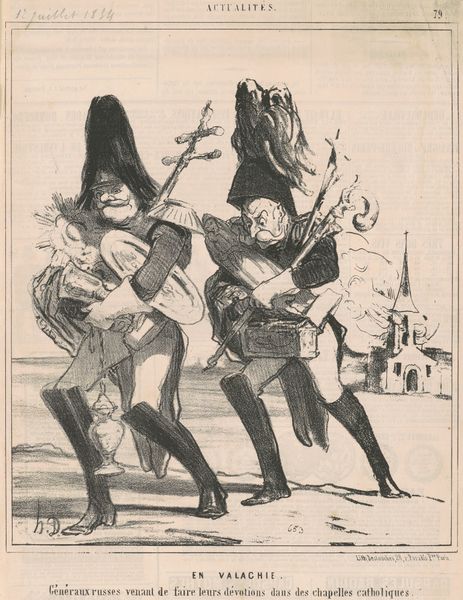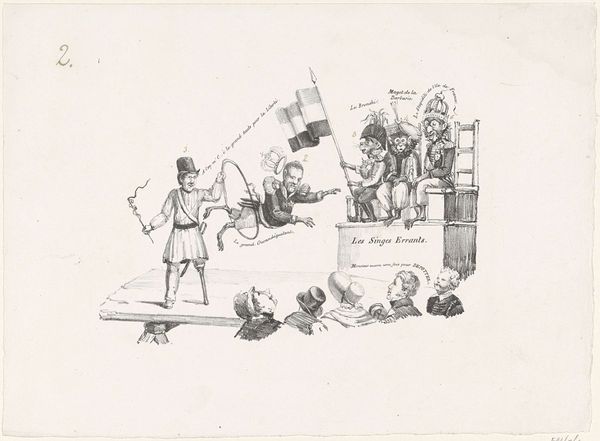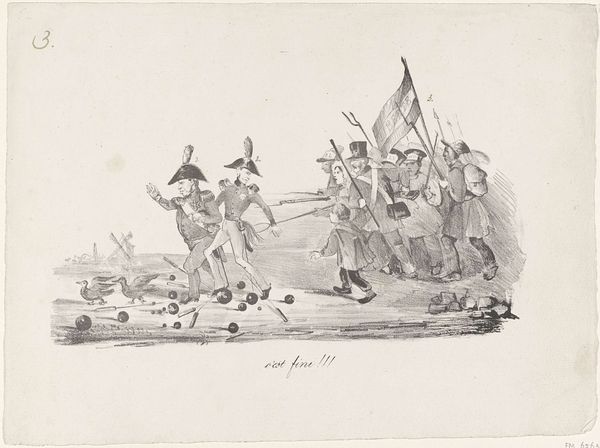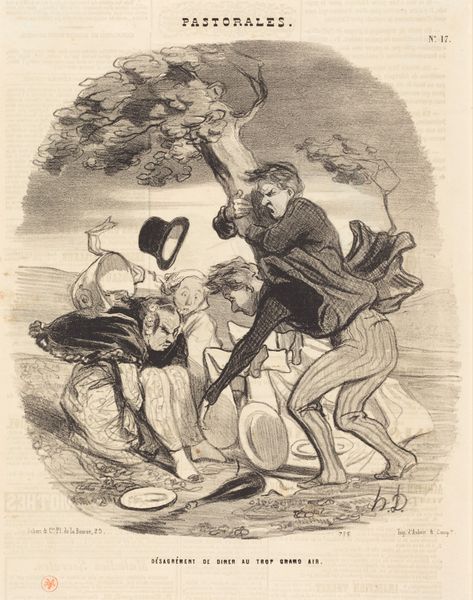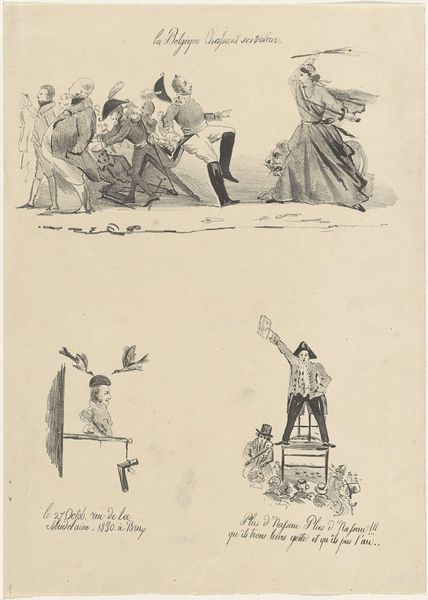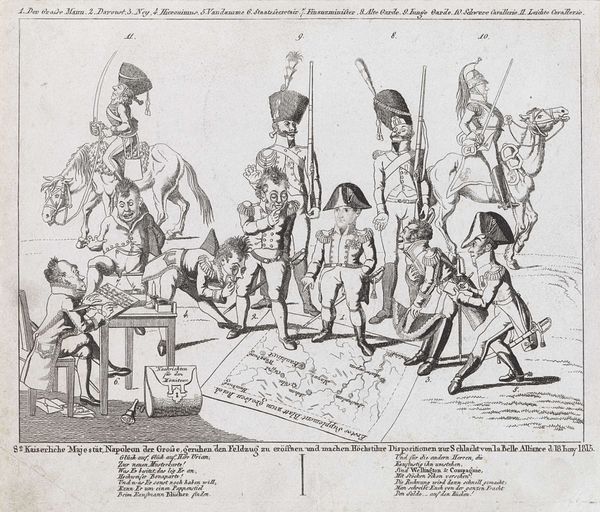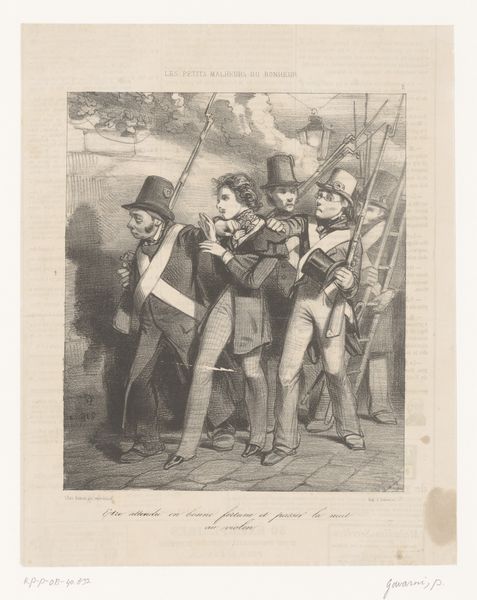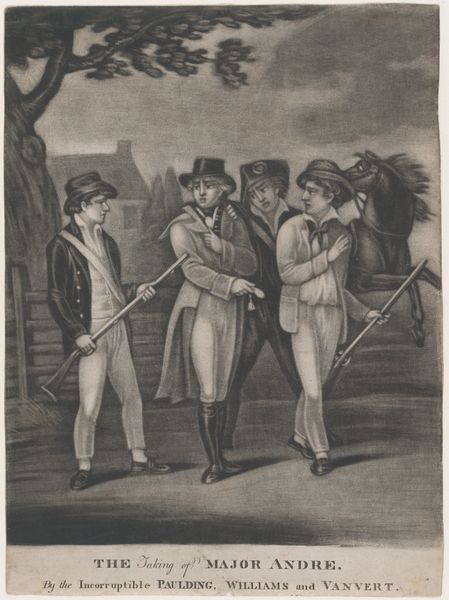
Dimensions: height 270 mm, width 195 mm
Copyright: Rijks Museum: Open Domain
Curator: Let's turn our attention to this captivating engraving entitled "Vrijheidsboom met aap en kaketoe," or "Freedom Tree with Monkey and Cockatoo". Though the artist is anonymous, it's dated between 1842 and 1887 and resides here at the Rijksmuseum. Editor: My first impression is how boisterous it is! There's such a frenzy of activity—dancing, music, animals... all circling a central pole. The contrast between the chaotic activity and the rigid verticality is striking. Curator: Exactly! The image invites an intersectional reading about societal dynamics and performative liberation during that era. Consider the pole as a locus of symbolic capital—it centers not just Dutch identity but perhaps highlights underlying tensions of colonialism. Editor: Agreed. Look at the craft of the engraving itself. The layering of lines to create depth, the detail in the costumes. But also the raw materials: paper, ink, the tools to create the printing matrix itself. Were these readily available, affordable? Who would have been able to acquire this image? Curator: That is the material condition that certainly influenced the spread of ideology, shaping what Pierre Bourdieu referred to as habitus within rising national sentiments. This caricature uses popular romanticism to propagate a national agenda by subverting it using satirical undertones in art and theater. Editor: The monkey and the cockatoo... they feel integral to understanding consumption in a colonial context. These animals became desirable objects of trade. Were they symbols of opulence that speak directly to consumption or commentary on foreign involvement? Curator: The pole is topped with a flag inscribed in French, ‘FLORESSIE HAUTEN’ that alludes directly to Dutch involvement with other cultures, which in turn became deeply tied into domestic concerns about freedom, societal progress, class relations. The artwork creates a bridge from Dutch societal norms toward something exotic – foreign – something inherently revolutionary. Editor: Right. I notice the composition forces us to consider the social hierarchy implicit even within celebratory "freedom." It's impossible to divorce the image from questions of accessibility and consumption. It makes you wonder: Whose freedom are we really celebrating here? Curator: Ultimately, this piece makes you think of how societal tensions about identity and politics can manifest so forcefully. The interplay of material and the conceptual underscores its multifaceted nature. Editor: Indeed, observing the print-making and material of 'Vrijheidsboom' alongside the sociopolitical dynamics brings it to the forefront of discussion surrounding accessibility and freedom in art history.
Comments
No comments
Be the first to comment and join the conversation on the ultimate creative platform.

